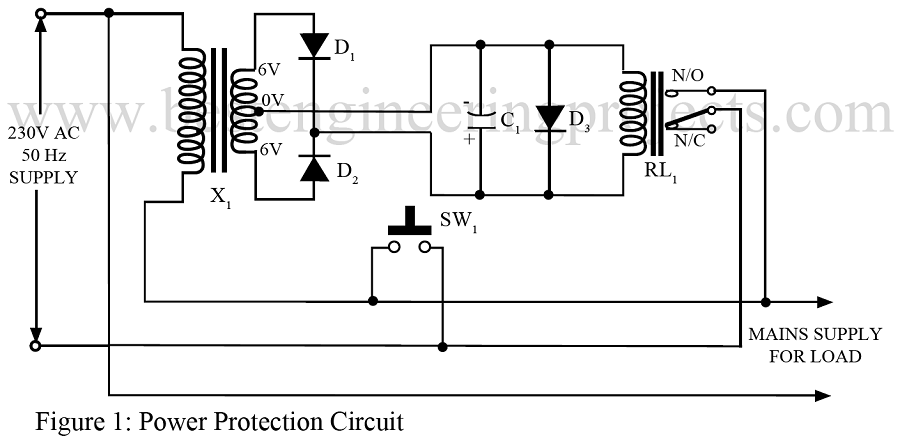Being active users of electrical appliances, we can’t deny the fact that they have almost become our right hand to perform our day-to-day activities. Some of these appliances cost us a heavy amount and when these devices fail to operate or get damaged, we suffer heavy economical loss and in addition to that, we lose our helping hand. To avoid this type of issue faced by most people, we have prepared this low-cost circuit “power protection circuit” which saves our dear electrically operated appliances from situations like sudden tripping and resumption of the main supply, since these events force appliances to suffer heavy damage.
Using a power protection circuit, we can save our precious TV, music system, refrigerator, and other instruments. Among these, refrigerators and air conditioners cost a heavy sum, and the heartbreaking fact tags along with the fact that these appliances are more prone to damage. The power protection circuit can thus be considered a life-saver for this piece of equipment.
Circuit Description of Power Protection Circuit
The overall operation of the power protection circuit is summarized here. The circuit switches off the main supply to the load as soon as the power trips. And then the appliances stop working, thus such dangerous situations can be easily uprooted. The supply can be resumed only by means of manual intervention. This refers to the fact that the supply can be switched on only after it has stabilized.
Talking about the circuit components of the “power protection circuit”, a step-down transformer followed by a full-wave rectifier and smoothing capacitor C1; which acts as a supply source for relay RL1 constitutes the whole circuit.
In the early phase, when the circuit is switched on, the relay is in a de-energized state and therefore the power supply path to the step-down transformer X1 as well as the load is incomplete. In order to complete the path, we energize the relay by pressing the switch SW1 for a moment. Along with the close contacts of switch SW1, we get a complete path for the supply to the transformer as well as the load.
In case of interruption in power supply, the supply to the transformer is made unavailable and the relay de-energizes breaking the complete circuit. Though the interruption period is short, the supply gets interrupted. As a result, the relay is de-energized. As soon as the supply resumes, the switch SW1 has to be pressed shortly to make the supply available to the load.
However, if the interruption period is very short i.e. like 1 to 5 milliseconds, that type of fluctuation in supply neither causes a noticeable effect on the circuit nor affects the status of appliances in use. The reason behind this fact is the presence of a large-value capacitor that has to discharge through the relay coil. This provides additional safety to the circuit to protect electrical equipment from unpredictable power supply issues.
Check out other protection circuits posted on bestengineeringprojects.com
- Overvoltage Protection Circuit
- High Low Voltage Cutout Circuit
- Single Phase Preventer with Under/Over Voltage Cutout
PARTS LIST OF POWER PROTECTION CIRCUIT
| Capacitor |
| C1 = 1000 µF, 25V (Electrolytic Capacitor) |
| Semiconductors |
| D1, D3 = 1N4007 |
| Miscellaneous |
| X1 = 230V AC Primary to 6V-0V-6V, 300mA SEC. Transformer
RL1 = 6V, 100 Ω Relay SW1 = PUSH-TO-ON Switch |
